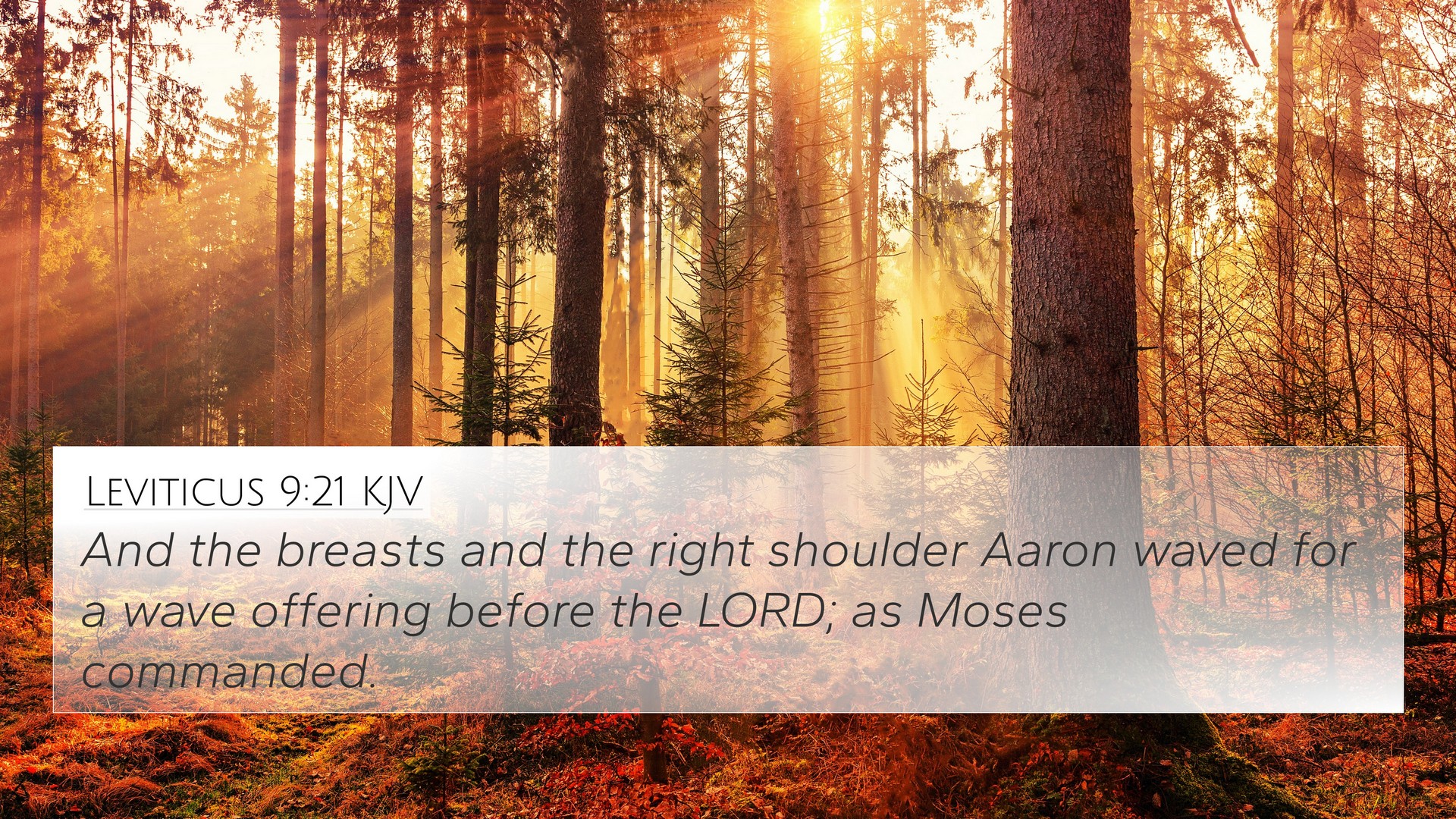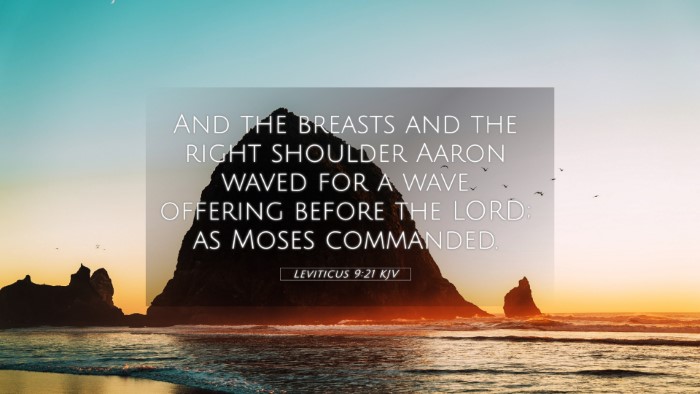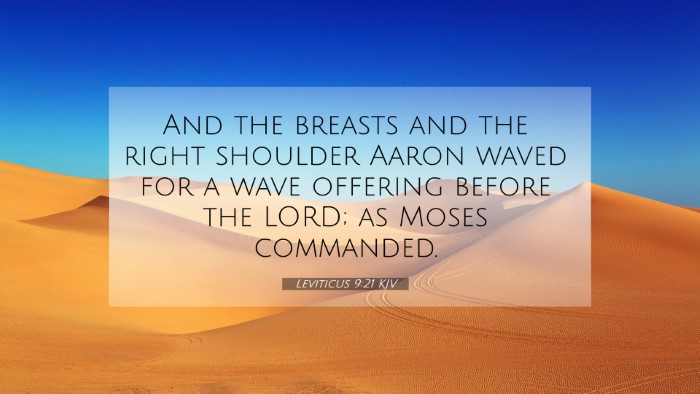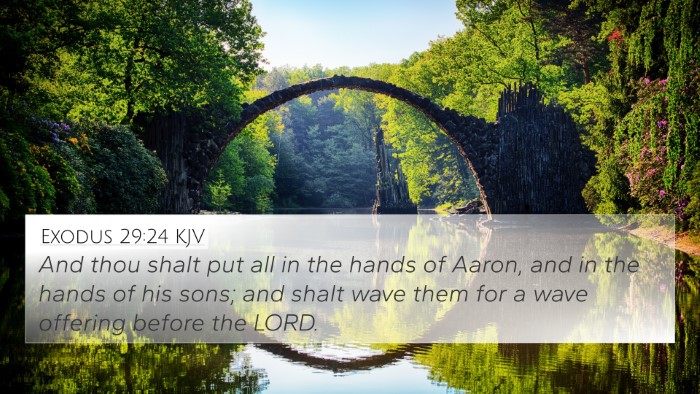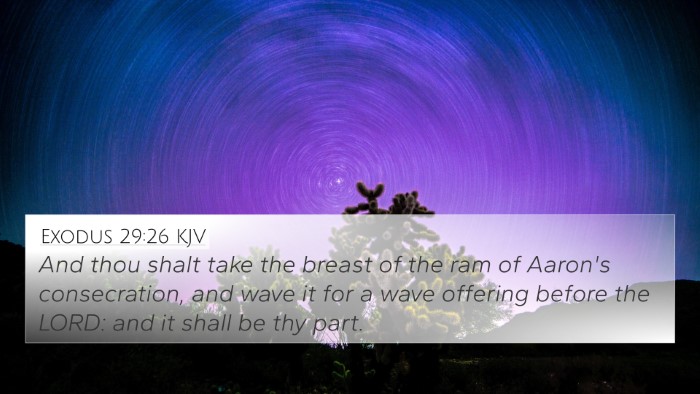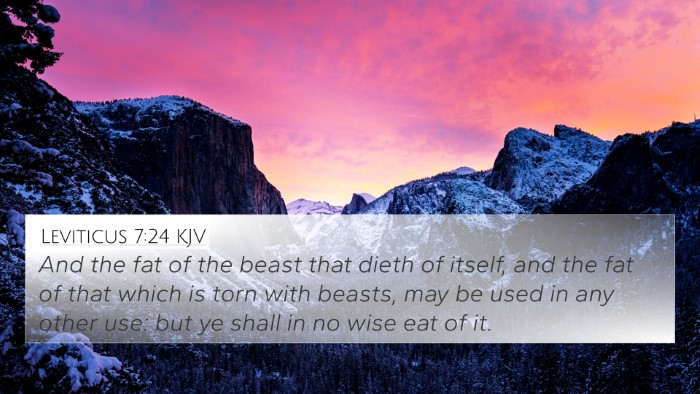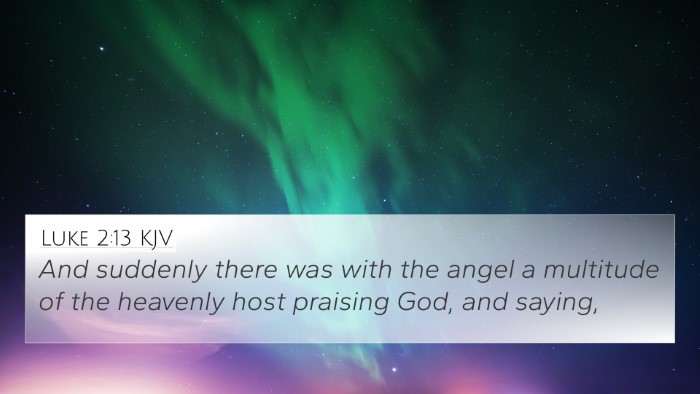Understanding Leviticus 9:21
Leviticus 9:21 states, "And the breasts and the right shoulder Aaron waved for a wave offering before the LORD, as Moses commanded." This verse describes a significant ritual in the process of sacrifices, marked by the ceremonial waving of offerings before God.
Summary of Meaning
Leviticus 9:21 highlights the prescribed actions that Aaron, as the high priest, undertook in fulfilling the requirements of the sacrificial system, emphasizing obedience and the ordained worship practices within the Mosaic Law. This act not only had implications for the physical sacrifices but also reflected deeper spiritual realities regarding submission, honor, and the acknowledgment of God’s sovereignty.
Insights from Public Domain Commentaries
Matthew Henry's Commentary
Matthew Henry points out that this act of waving the offerings signifies the presenting of the sacrifices to God. It portrays the surrender of the sacrifices to divine approval, illustrating the spiritual connection between the Israelite worshippers and God. Henry emphasizes the importance of the priestly roles in mediating this relationship, showcasing how critical it was for Aaron to follow the Lord's commands as given through Moses.
Albert Barnes' Commentary
Albert Barnes elaborates on the waving of the offering as a gesture of dedication to God. This act represents more than mere ritual; it embodies an attitude of reverence and acknowledgement of God’s grace in accepting these offerings. Barnes notes that this method reflects a broader biblical theme, where physical acts often signify deeper spiritual truths, linking back to the entire sacrificial system as a precursor to understanding Christ’s ultimate sacrifice.
Adam Clarke's Commentary
Adam Clarke discusses the significance of the wave offering, mentioning how it serves as a reminder of the priest’s function in mediating between the people and God. Clarke asserts that the waving of the breast and shoulder should be viewed not only as part of the sacrifice but as a means of sanctifying the gifts and securing God’s favor. This act is a reflection of communal worship, reminding us that God desires relationship and recognition through our offerings.
Related Cross-References
Leviticus 9:21 can be cross-referenced with the following verses, illustrating thematic and ritual connections within the Bible:
- Exodus 29:24 - Instructions on presenting the wave offering.
- Numbers 18:10 - The sanctity of the priests’ share of the offerings.
- Deuteronomy 18:3 - The rights of the priests regarding offerings.
- Hebrews 7:12 - The change of the priesthood and its implications.
- 1 Corinthians 9:13-14 - New Testament reflection on ministerial support from the congregation.
- Matthew 5:23-24 - The importance of presenting gifts to God with right intentions.
- Romans 12:1 - Presenting our bodies as a living sacrifice in light of mercies given.
- 1 Peter 2:5 - Believers as living stones, offering spiritual sacrifices.
- Leviticus 7:30 - The way to offer the sacrifices correctly.
- Psalm 51:17 - The heart's offering is more crucial than physical sacrifices.
Thematic Connections
The thematic links among these verses underscore a continuity in God’s redemptive plan from the Old Testament sacrificial system to the sacrificial love expressed through Jesus Christ. The mention of Aaron and the wave offering serves as a pathway for understanding how believers today are called to present their lives as offerings to God, echoing the spirit of sacrificial worship throughout the Scriptures.
Utilizing Cross-References
Understanding how to effectively use cross-references in the Bible can deepen one’s study. Tools such as a Bible concordance or Bible cross-reference guide can help identify connections between verses. Engaging in comparative Bible verse analysis encourages a more rounded comprehension of the text, revealing underlying themes, and enhancing one's spiritual journey.
Conclusion
In conclusion, Leviticus 9:21 invites readers to explore the significance of worship and sacrifice. The actions taken by Aaron offer a glimpse into the heart of God’s expectations from His people, pointing towards the greater reality fulfilled in Christ. By utilizing cross-referencing Bible study methods, believers can uncover the rich tapestry of Scripture that connects various themes and teachings across both the Old and New Testaments.
